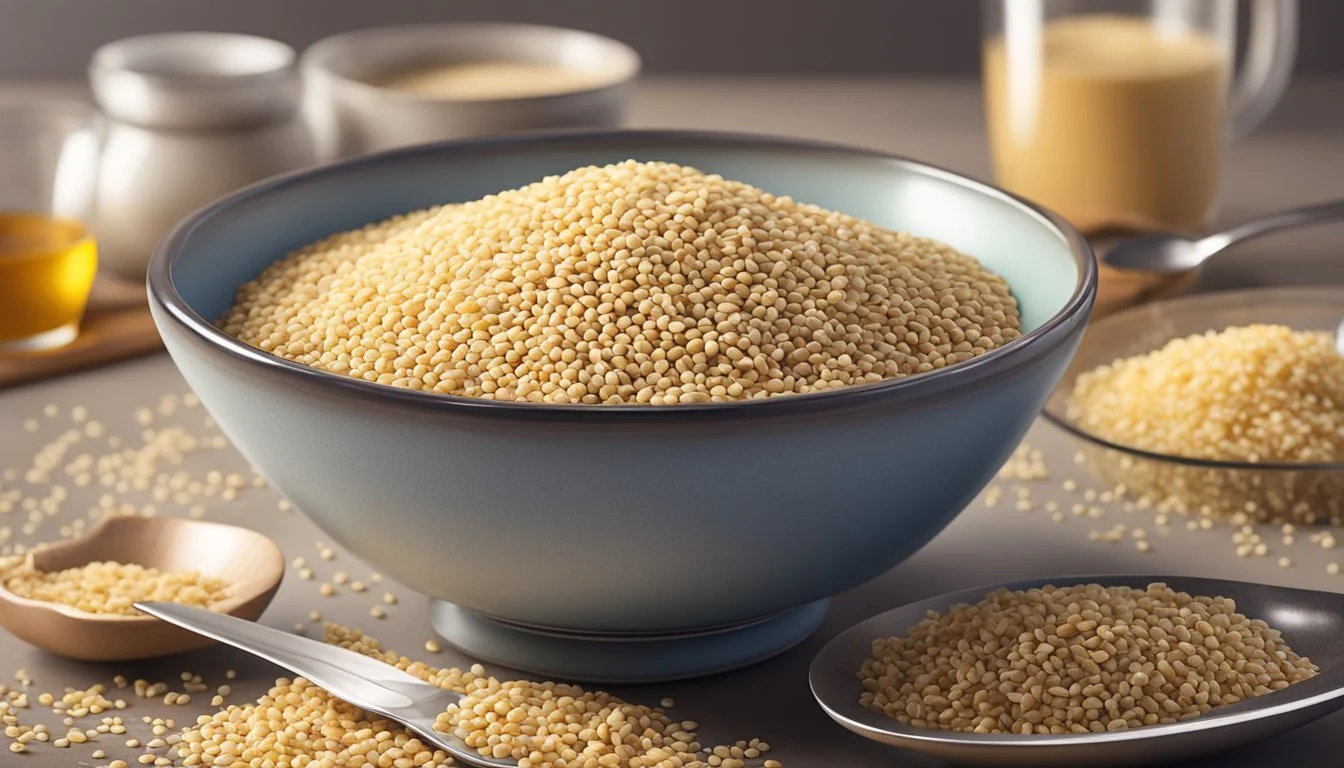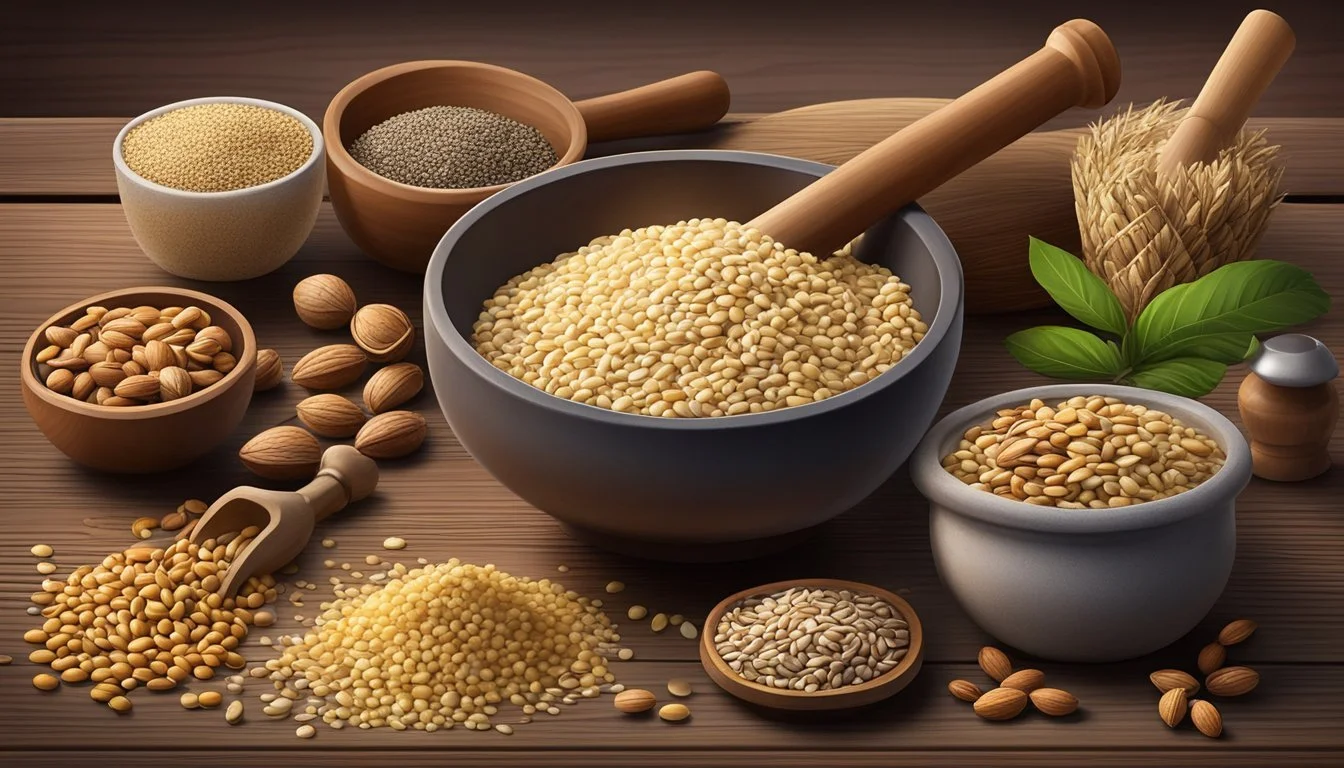Cracked Wheat Substitutes
Best Alternatives for Nutritious Meals
When a recipe calls for cracked wheat, but it's unavailable or not suitable for dietary needs, knowing the best substitutes is essential. Bulgur, quinoa, couscous, brown rice, and steel-cut oats are excellent alternatives that can fit seamlessly into many recipes. Each option offers unique textures and flavors, making them versatile replacements depending on the dish.
Bulgur is a close match to cracked wheat with its similar texture and cooking process, making it an easy and convenient substitute. Quinoa provides a nutrient-rich option, adding a slightly nutty flavor and a robust nutritional profile. For a quick-cooking alternative, couscous can be an excellent choice, bringing a mild taste and a light, fluffy texture to the table.
Brown rice offers a hearty, chewy texture, perfect for pilafs and salads. Steel-cut oats, although less common, can also serve as a substitute, especially in hearty, warm dishes like soups and stews. Exploring these substitutes ensures that you can always find a suitable alternative to cracked wheat, keeping your culinary creations varied and delicious.
Understanding Cracked Wheat
Cracked wheat is derived from whole wheat grains that have been crushed into smaller pieces. This process helps retain many of the original grain's nutrients. Cracked wheat is known for its slightly chewy texture and mildly nutty flavor.
Nutritional Value
Cracked wheat is rich in dietary fiber, aiding in digestion and maintaining healthy cholesterol levels. It contains essential vitamins and minerals, such as iron and magnesium, important for overall health.
Comparison to Whole Wheat
While both cracked wheat and whole wheat come from the same grain, cracked wheat has a different texture due to its crushed form. This makes it quicker to cook compared to whole wheat berries, which require longer cooking times.
Various Uses
Cracked wheat can be used in different culinary applications. It is commonly found in salads, pilafs, and as a nutritious breakfast cereal.
Dietary Restrictions
For those with dietary restrictions, cracked wheat is naturally free of additives and preservatives. However, since it contains gluten, it is not suitable for individuals with celiac disease or gluten intolerance.
Historical Context
Known as one of the oldest convenience foods, cracked wheat has been utilized for centuries. Its ease of preparation and nutritional benefits made it a staple in various cultures.
Texture Differences
Compared to refined grains, cracked wheat maintains a preserved texture and nutritional profile. This characteristic makes it a popular choice for those looking to enhance their meals with whole-grain options.
Health Benefits of Whole Grains
Whole grains offer various health advantages, such as essential nutrients, improved digestion, and valuable protein content. They are packed with fiber, antioxidants, vitamins, and minerals that contribute positively to overall well-being.
Nutrient-Dense Choices
Whole grains, including quinoa, bulgur, and whole wheat, are rich in essential nutrients. They provide a good source of manganese, phosphorus, zinc, and folate. These grains also contain B vitamins and antioxidants which are crucial for maintaining energy levels and reducing oxidative stress on cells.
Unlike refined grains, whole grains include bran and germ, providing higher nutrient density. Incorporating them into the diet can help meet daily vitamin and mineral intake, essential for a balanced diet.
Dietary Fiber and Digestion
Whole grains are an excellent source of dietary fiber, which aids in digestion and promotes a healthy gut. Fiber helps regulate bowel movements and prevents constipation. It also plays a role in lowering cholesterol levels and controlling blood sugar levels, reducing the risk of heart disease and diabetes.
The high fiber content in whole grains like bulgur and whole wheat bread supports the growth of beneficial gut bacteria, contributing to better digestive health and enhanced nutrient absorption.
Protein and Amino Acids
Whole grains are not only carbohydrate sources but also provide protein and essential amino acids. Quinoa, for instance, contains all nine essential amino acids, making it a complete protein source, unlike most other grains. This is particularly beneficial for individuals following plant-based diets.
Proteins from whole grains contribute to muscle repair and growth. Along with amino acids, these grains also offer selenium and calcium, supporting bone health and metabolic functions. Integrating diverse whole grains into the diet ensures a broader range of nutrients supporting overall health.
Popular Cracked Wheat Substitutes
When looking for substitutes for cracked wheat, it's essential to choose replacements that match either the texture, flavor, or dietary needs of the recipe. This section explores gluten-free alternatives, options with similar textures, and substitutes with a nutty flavor.
Gluten-Free Alternatives
For those on a gluten-free diet, several options can replace cracked wheat effectively. Quinoa is a versatile grain that cooks quickly and offers a slightly nutty taste and a chewy texture. Buckwheat, despite its name, is gluten-free and delivers a robust, earthy flavor with a chewy texture suitable for many dishes.
Amaranth is another highly nutritious option, providing a creamy texture when cooked, ideal for porridge or similar dishes. Millet grains are small and round, offering a mildly sweet and nutty flavor that fits well in salads or as a side dish. Finally, shelled hemp seeds are a great choice, providing a nutty, chewy texture without the need for cooking, making them perfect for raw salads.
Similar Texture Choices
Achieving the right texture is crucial in recipes substituting cracked wheat. Bulgur wheat is an excellent substitute as it is essentially pre-cooked cracked wheat with a similar chewy texture and a slightly nutty flavor. Farro offers a chewy texture and works well in soups and salads because of its hearty consistency.
Wheat berries are another whole-grain option, providing a dense and chewy texture, although their longer cooking time might need adjustment in the recipe. Barley can also be used, offering a chewy bite and a slight nuttiness, making it suitable for soups and stews. Steel-cut oats are an alternative for a chewy texture, often used in breakfast dishes or hearty sides.
Nutty Flavor Matches
For those seeking to replicate the nutty flavor of cracked wheat, several grains and seeds can be used. Farro offers a rich, nutty taste and a firm texture, making it a good substitute in salads and soups. Kamut provides a buttery, nutty flavor and chewy texture that works well in a variety of dishes.
Freekeh is another option with a distinct roasted, nutty flavor, suitable for savory dishes. Wild rice offers a unique nutty taste with a firm texture, ideal for mixed grain salads or as a side dish. Buckwheat also presents an earthy, nutty flavor, making it versatile for both sweet and savory applications.
Cooking and Usage Tips
Ensuring that grain substitutes are prepared correctly is key to achieving the desired texture and flavor in your dishes. Learn how to prepare grain substitutes, incorporate them into recipes, and adjust cooking times for ideal results.
Preparing Grain Substitutes
When substituting grains such as bulgur wheat for cracked wheat, preparation is essential. Begin by rinsing the grain thoroughly under cold water to remove excess starch.
For a chewy texture, use a ratio of 2 cups of liquid per cup of grain. Simmering bulgur wheat for about 15 minutes or barley for approximately 40 minutes can yield a nutty and tender result.
Experimenting with cooking liquids like broth instead of water can add depth to dishes such as pilafs or grain bowls. The correct preparation ensures that the grains release their natural flavors and achieve the right consistency.
Incorporating into Recipes
Grain substitutes can be seamlessly included in a variety of dishes. Bulgur wheat works well in Mediterranean and Middle Eastern cuisine, particularly in grain salads like tabbouleh. Its creamy texture when cooked makes it an excellent base for vegetarian curries and stews.
For soups, using barley can add body and a pleasant chewy bite. Meanwhile, cracked wheat's versatility allows it to be used in pilafs and side dishes. Incorporating these grains into recipes can transform a simple dish into a hearty meal.
The adaptability of these grains makes them perfect for grain bowls, where they can be paired with roasted vegetables and proteins for a nutritious, superfood meal. Consider the texture and flavor profile of the grain substitute when deciding on its use in a recipe.
Adjusting Cooking Times
Cooking times vary widely between grain types. For instance, bulgur wheat typically requires only 10-15 minutes to cook. Cracked wheat may take around 25-30 minutes, while wheat berries can take up to 120 minutes.
Properly managing cooking time is essential to achieve the desired texture. Shorter cooking times will yield a firmer, chewy grain, ideal for salads and pilafs. Longer cooking times result in a softer, creamier texture, perfect for soups and stews.
When using grain substitutes, always taste test during cooking to ensure the grains are cooked to your preference. Adjustments in cooking time and liquid proportions can make a significant difference in the final dish, ensuring the grain complements the dish perfectly.
Culinary Exploration Beyond Cracked Wheat
Cracked wheat is known for its nutty flavor and chewy texture, making it a favorite in many dishes like tabbouleh salad and kibbeh. For those looking to explore versatile alternatives, there are numerous options that can expand culinary horizons.
Bulgur Wheat is a top substitute, offering a similar nutty taste and chewy texture. It's also high in fiber and provides a good source of protein.
Quinoa is another excellent option. As a complete protein, it contains all essential amino acids. It’s low in fat and rich in essential vitamins, making it a nutritious choice for various dishes, from salads to curries.
Freekeh is worth mentioning due to its smoky flavor and chewy texture. This grain is particularly good in salads and pilafs.
Whole-Wheat Couscous provides a quick-cooking alternative. It works well in dishes like pasta salads and can be a great base for curries and lentil stews.
Farro and Barley are also valuable options. Farro has a nutty taste and works well in soups and risottos. Barley, with its chewy consistency, can be used in stews and as a side dish.
For a unique twist, ingredients like Buckwheat Groats and Millet Grains offer interesting textures. Buckwheat has a robust, nutty flavor, making it suitable for porridges and salads. Millet is mild and versatile, perfect for stuffing or as a side.
Using these substitutes can lead to surprising and delightful outcomes in various culinary creations.






